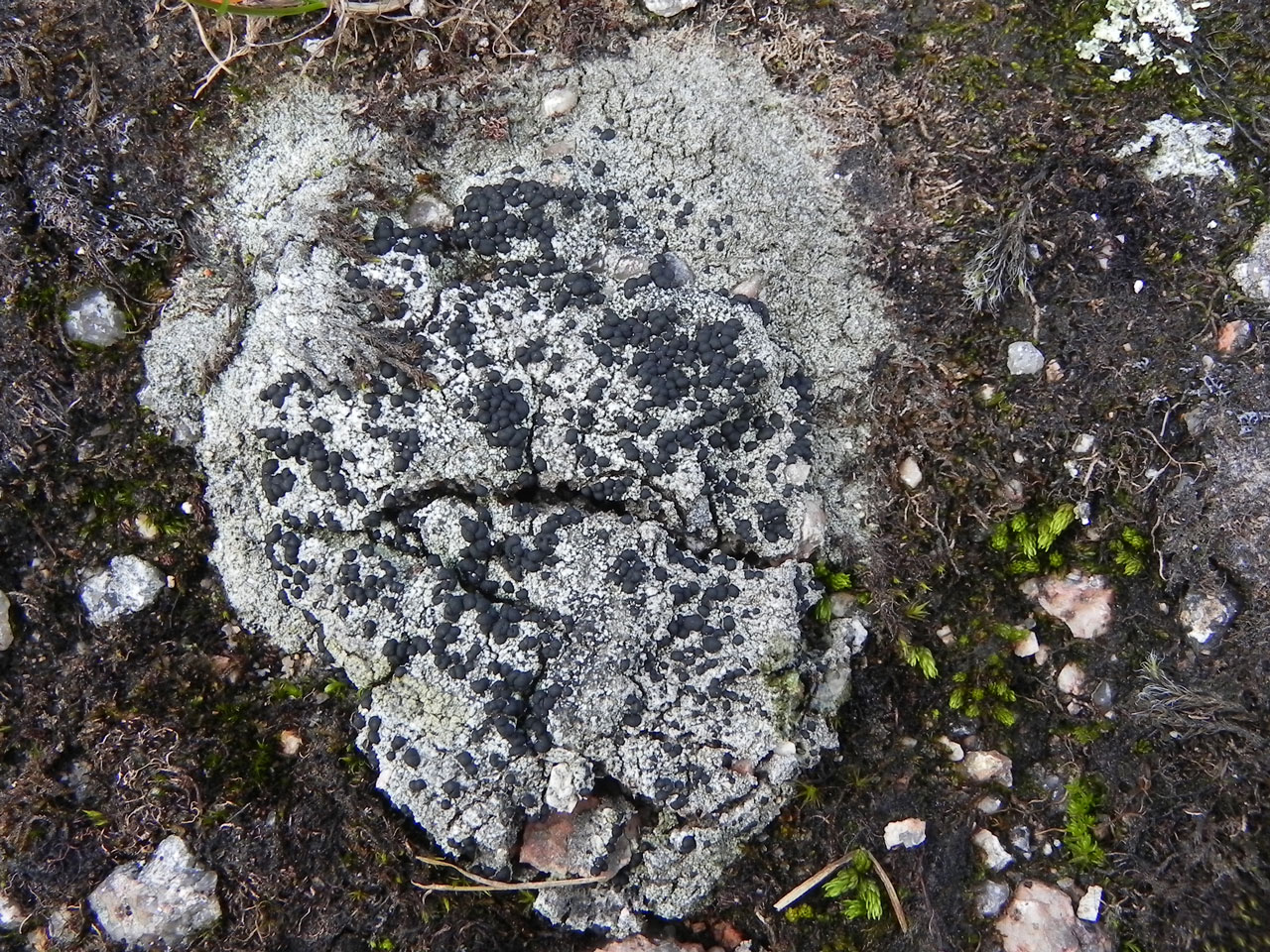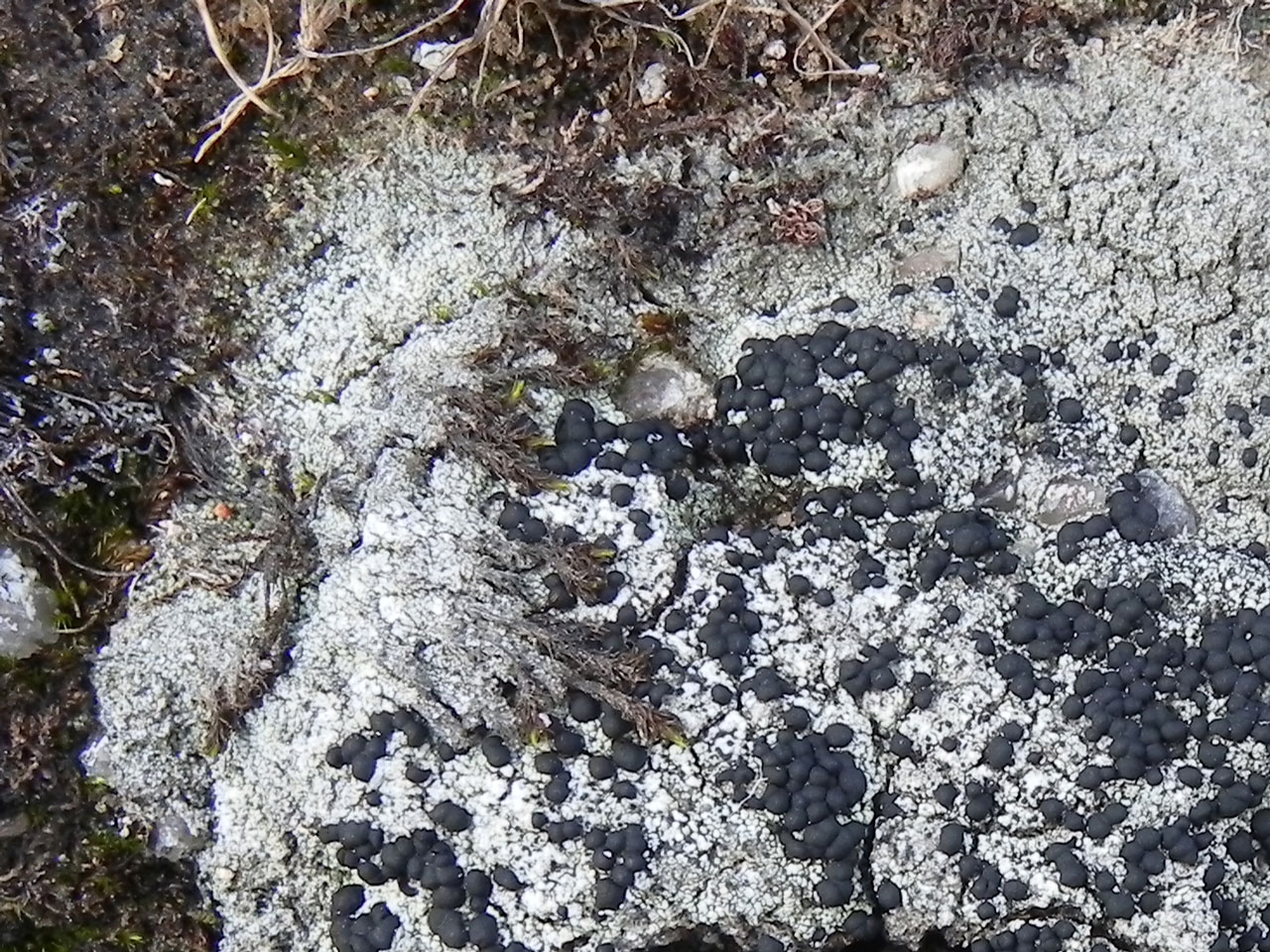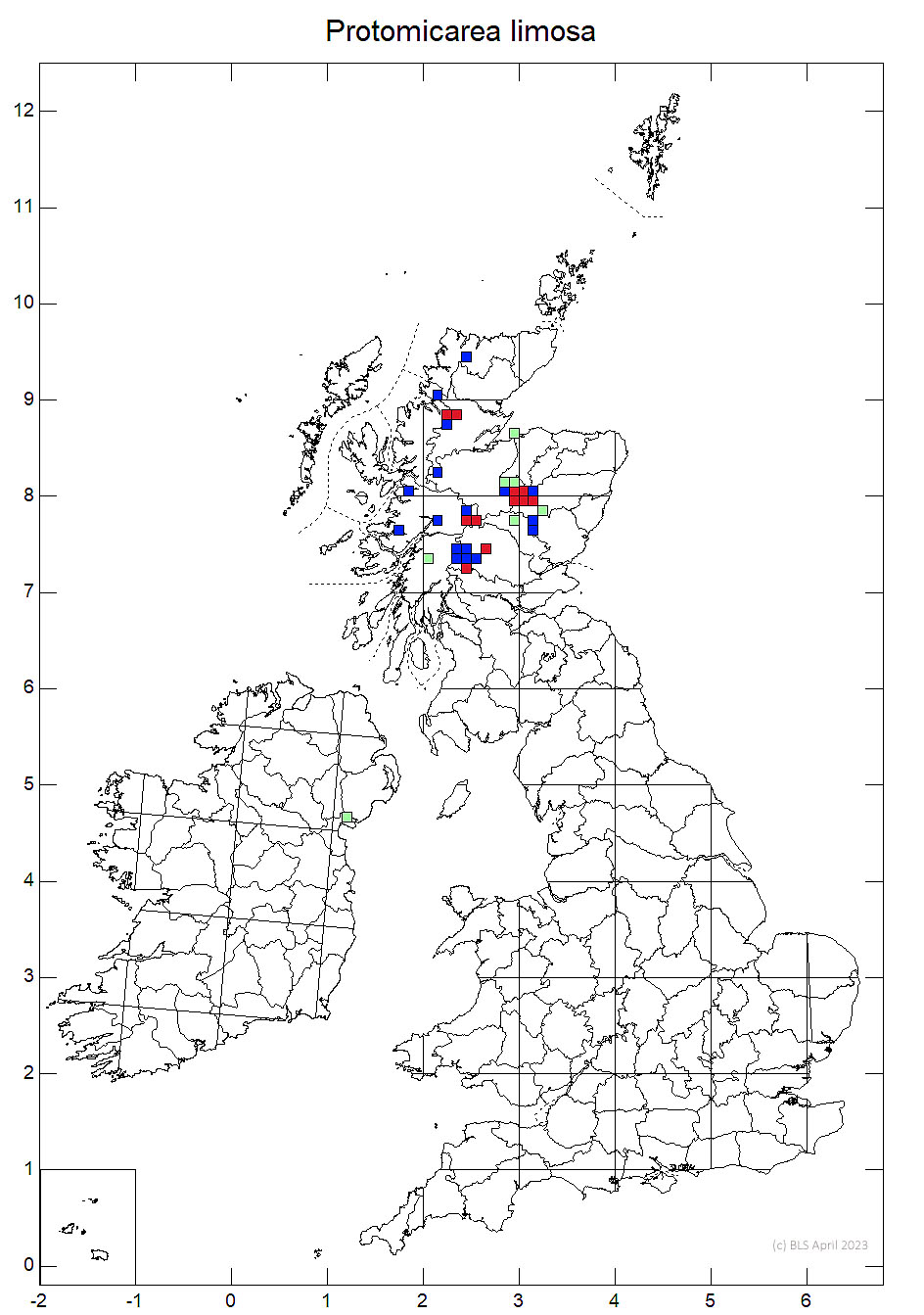This lichen forms prominent white-grey thalli resembling dried cow pats, speckled with black apothecia, in high altitude late snow-lie vegetation in the Scottish Highlands.
Thallus crustose, granular-verrucose, of convex granular areoles (0.1–) 0.2–0.6 (–1) mm diam., white-grey to grey; prothallus white or absent; photobiont chlorococcoid, 7–12 µm diam.; cephalodia absent. Ascomata apothecia, (0.3–) 0.5–0.8 (–1) mm diam. sessile, black, strongly convex, immarginate, appressed, sometimes confluent; true exciple not apparent, reflexed, ± colourless, composed of branched, radiating hyphae 1–2 µm diam.; epithecium and hymenium deep bluish green, K–; hymenium 45–65 µm tall, hymenial gel I+ red; hypothecium reddish brown, K+ orange; paraphyses 1.3–2 µm diam., ± unbranched, occasionally anastomosed, adglutinated, scarcely swollen at the apices. Asci 35–45 × 9.5–11 µm, as in Psora, with a K/I+ blue tholus with intensely reacting tube. Ascospores (8–) 10–14 (–15) × 3–4.5 (–5) µm, narrowly ellipsoidal to subfusiform, one or both apices often attenuated. Conidiomata pycnidia; conidia 6–7 × 1.5 µm, bacilliform. Thallus C–, K–, KC–, Pd+ orange-red, often patchily (pannarin and unidentified triterpenoids).
Easily spotted by the large “cow pat” like thalli. This species recalls Frutidella caesioatra, which occurs in similar situations, but P. limosa differs in the less granular and thinner thallus, non-pruinose apothecia, the darker hypothecium, smaller asci with darkly amyloid axial tube, the more pointed and narrower ascospores and in the thallus reactions. Biatora cuprea (Ramalinaceae) has a similar Pd+ red thallus (argopsin) but the apothecia are pale to dark red-brown, not black as in P. limosa. The thalli of Micarea assimilata and M. incrassata (Pilocarpaceae) are Pd–, produce cephalodia and both species have a more darkly coloured hypothecium. Gilbertaria contristans and Micarea lignaria have septate ascospores and mostly smaller apothecia and thallus areoles. “Lecidea” berengeriana has distinctly swollen paraphysis apices and Bryobilimbia hypnorum (Lecideaceae) has lecideine apothecia; both species also have a Pd– thallus, a dark brown hypothecium and violet (K+ green) pigment granules in the apothecial tissues.
On acid soil, over mosses or humus, mostly above 900 m in late snow-lie vegetation

Rare. N. Scotland (Highlands).
As a lichen of high altitude late snow-lie vegetation, potentailly threatened by climate change.
Britain: Notable
Cannon, P., Aptroot, A., Coppins, B., Orange, A., Sanderson, N. & Simkin, J. (2022). Lecanorales: Psoraceae, including the genera Brianaria, Protoblastenia, Protomicarea and Psora. Revisions of British and Irish Lichens 28: 1-11.


